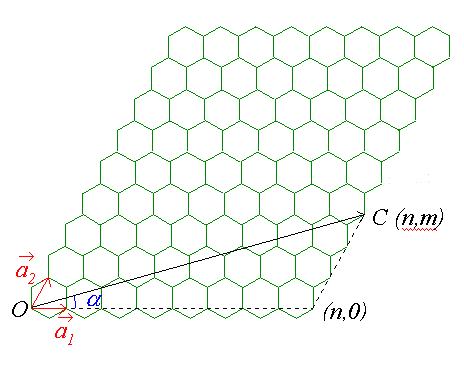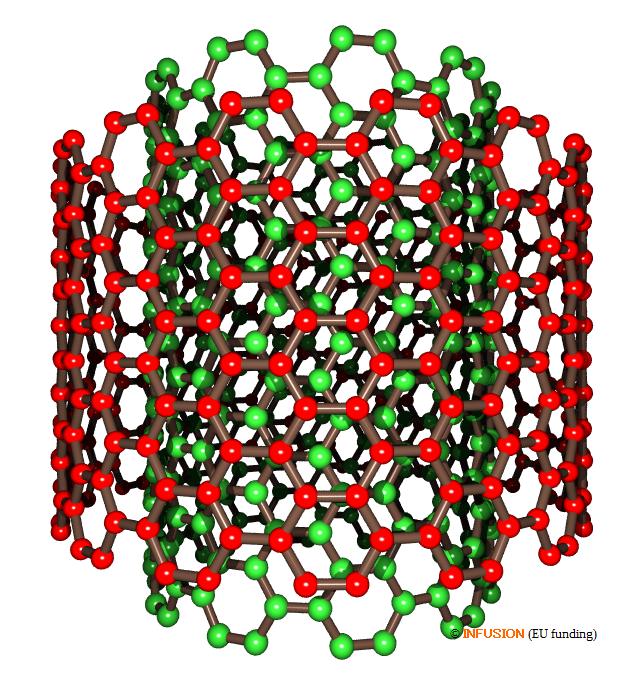Carbon nanotubes
Carbon nanotubes are a cylindrical variety of graphite. The basic constituent is a single-wall nanotube, namely a one-atom thick cylindrical structure made of a rolled-up graphene sheet. Carbon nanotubes can be made by a large variety of methods, among which a few techniques can produce single-wall nanotubes with a little fraction of double- and multi-wall nanotubes.
|
The structure of a single-wall nanotube is defined by a pair of integer numbers n and m, called the chiral indices. These numbers are the coordinates of the site C that superimposes onto O when the graphene strip is rolled up onto a seamless cylinder in such a way that OC becomes a circumference. The so-called chirality, namely the specific rolling, varies between the zigzag geometry, when the circumference of the nanotube is parallel to a zigzag direction of graphene (like trans-Polyacetylene), and the armchair geometry where the circumference is parallel to an armchair direction (like cis-Polyacetylene). |
 |
 |
This image illustrates a double-wall nanotube: one single-walled nanotube is coaxial to another one, the inter-wall distance being close to what is realized between successive atomic planes in grahite, 0.34 nm. In this particular example, both nanotubes have the armchair geometry. Here, the two atomic structures have many symmetry elements in common. Multi-wall nanotubes often mix constituents of different chiralities. |
Single-wall nanotubes are the most interesting structures for nanotechnology, because they have well-defined electronic properties, either metallic or semiconductor. Nanotubes can be used as nanofillers in composites materials. They are interesting supports for molecules, either bound to the outer surface or trapped inside the hollow part of the tube.